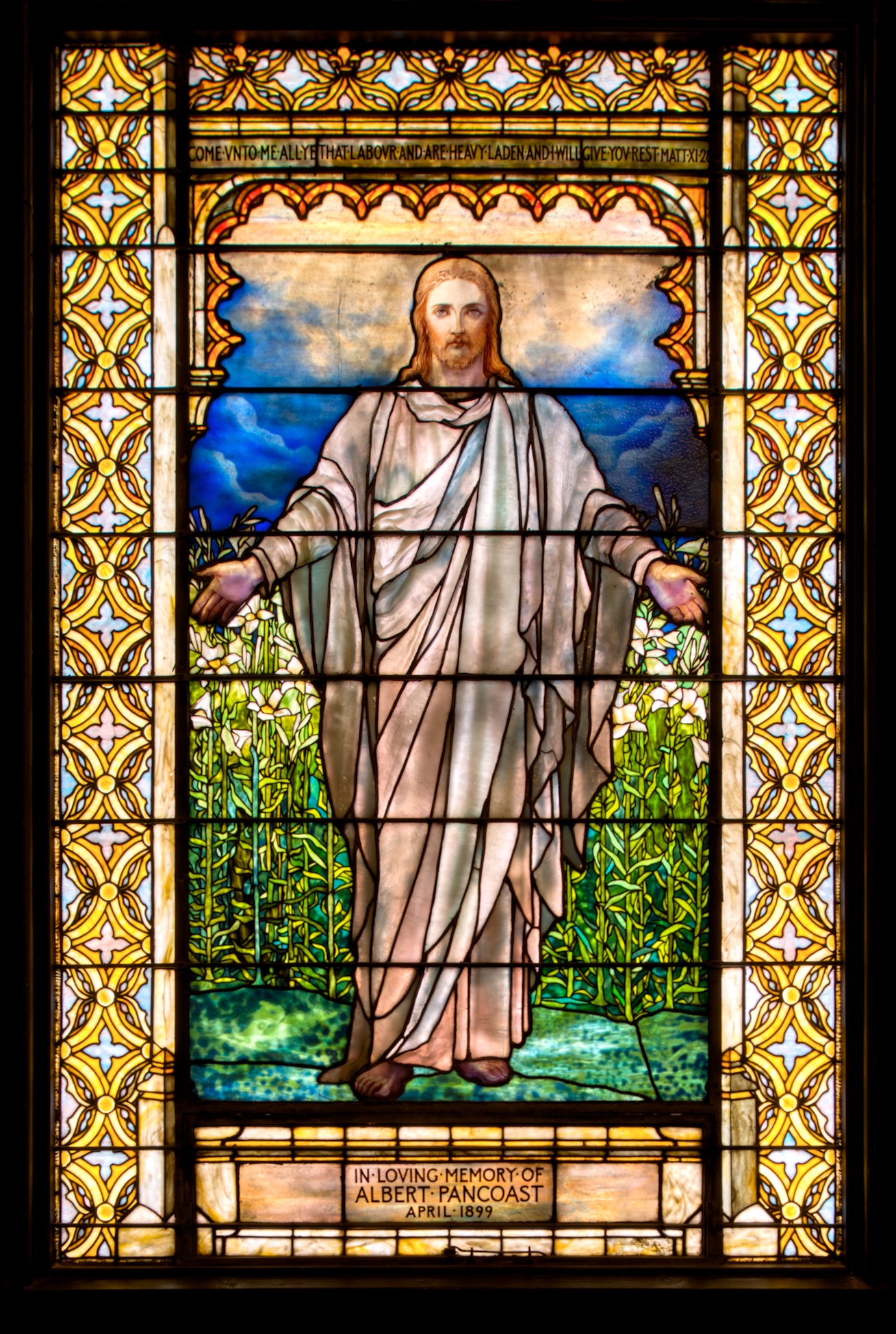Sites of wonder: Encounters with our Tiffany windows.
Join us! We’re looking at more of St. Stephen’s wonderful stained-glass windows. Today, we begin the group of Tiffany windows, perhaps the most famous of all in the church—whose designer is best known among Americans who worked in stained glass at the turn of the twentieth century.
St. Stephen’s, apparently the first church in Philadelphia to be designed for stained-glass windows, was well into its fifth decade of commissioning them (its first arrived in 1828) when painter-designer Louis Comfort Tiffany began his glass and decorating business in the late 1870s. The enterprise blossomed quickly. The Tiffany Census lists hundreds of just his windows throughout the country, many of which, like ours, are in churches, chapels, and synagogues. That doesn’t count the many consecrated mausoleums. St. Stephen’s, according to the Census, is one of forty-one such sacred spaces in the Philadelphia area that have (or had) Tiffany windows. The first in Philadelphia (1888), claims the Census, is at Trinity Church Oxford, a Baptism of Christ that still presides over the altar. St. Stephen’s all arrived within less than twenty years: It received its first in 1899 and its last in 1917—all memorials to congregants. St. Stephen’s, moreover, appears to have the greatest number still in place in Philadelphia, 6 (if we count the three lights with medallions in the Tiffany reredos as one project): five figural designs and one rose window. The Harriet Hollond Memorial Presbyterian Church at Broad and Federal reportedly had ten Tiffany ornamental memorials among its many windows but their status is unclear. Does anyone know what happened to the church?
Our first Tiffany window, in terms of design and commission, is our third figural design (the first windows were symbolic ornamentals), following the initiative of the Magee memorials of 1879-80 designed by Henry Holiday that I posted earlier. St. Stephen’s received this Tiffany window in May 1899 as a memorial to congregant Albert E. Pancoast from his widow Rebecca (née Thomas) and two daughters. Mr. Pancoast, a Philadelphia iron merchant from one of the earliest English families to settle in New Jersey, died of stomach cancer on August 12, 1898, according to his funeral record in our Parish Register; other sources have other dates. Shortly before (1894), their eldest daughter Eleanor (Ella), who was baptized at St. Stephen’s, married Joseph Widener, becoming a major figure in one of the most prominent and fabulously wealthy Gilded-Age families of the United States.
The image the Pancoast family commissioned gives unusual visual form to the quote from Christ seen above it: “Come unto me all ye that labour and are heavy laden and I will give you rest” (Matthew 11:28). The design presents Christ’s lifetime offer of solace to a burdened humanity as his continuing promise from heaven. The window includes a copyright of 1898, suggesting the Pancoasts’ commission of the window (possibly late that very year) is one of the earliest for this design.
Stained-glass window from All Souls Unitarian Universalist Church
As with other Tiffany designs, there are variants. A handsome three-section window of about 1924 (shown here), a memorial for the All Souls Unitarian Universalist Church in New London, Conn., purchased in 2015 by the Lyman Allyn Art Museum, makes a telling comparison. The two feature the same pose, drapery, and landscaped heaven. Such similarities emphasize their differences. The format of the St. Stephen’s window is vertical, dominated by a slenderer figure of Christ. Its overall design is sparer. It focuses on Christ’s “pure” pearlescent robes that echo the field of white lilies; the luminous green stems suggest eternal vitality. The lilies’ relatively consistent height—at Christ’s hands—emphasizes his gesture. The strong light from somewhere above spills over the volumes of his face, body, and robe. He is very there, as palpable as we are, as he was in life.
The power of the landscape—crucial ingredients in the images’ story and meaning—suggests they are by one of Tiffany’s designers of botanical and landscape elements who is now being studied: Agnes Fairchild Northrop, who began work for the studio in 1884 and continued after Tiffany’s death in 1933.
Christ’s frontal pose in both windows openly makes us, in our world, the focus of his address from heaven. That celestial domain in St. Stephen’s window, however, is elaborately bordered as a tabernacle, creating a portal, an accessible threshold, for us.
With the placement of this radiant image on the lower level of the south wall near the chancel, a luminous risen Christ welcomes us in that area of the church where we interact with the divine, the altar.
Suzanne Glover Lindsay
St. Stephen’s historian and curator

